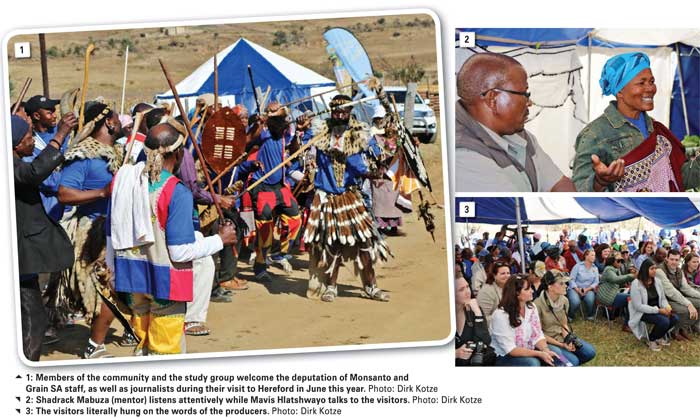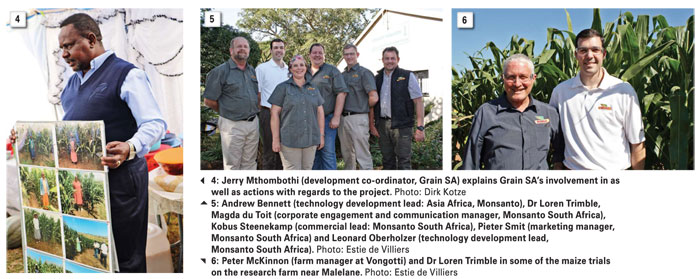September 2017
Hunger not only affects the stomach, it also has direct influence on the development of children all over the world – physically as well as mentally. Too many men and women across the world struggle to feed their children a healthy meal every day. Out of the 795 million people in the world one in nine still daily goes to bed hungry. Even worse: One in every three people suffers from some form of malnutrition.
Even though most of us reading this article never experienced real hunger in our lives, we know that if that were the position you found yourself in and it somehow changed to where you experience a situation of abundance, it would be truly life-changing. And this is the story of Mss Mavis Hlatshwayo.
Hlatshwayo farms on 3 ha in the Hereford district, close to the Oshoek border post in Mpumalanga. Her husband died a couple of years ago and left her to fend for herself and their children. She did what she could on the land allocated to her, but sadly she was part of a community who experienced hunger regularly.
Grain SA approached the Hereford community to become part of their Subsistence to Abundance project. The main object of this
project is to teach farmers good farming practices whilst making the best technology available to them. That was when this life-changing journey for Hlatshwayo and others in the Hereford community started.
Hlatshwayo joined a Grain SA study group and never missed a meeting. She was eager to learn to better her yield and work towards food security for her household and the community. Monsanto, as a partner in the project, provided them with good quality biotech seeds and it was not long before the Hereford community could experience the benefits of biotechnology and good production practices first-hand.
Four years ago, Hlatshwayo barely harvested 2 t/ha and it was impossible for her to feed her children with the little grain she produced. This season, she planted Monsanto’s DKC 7B-83R cultivar and harvested a commercial yield of over 6 t/ha. That surely is life-changing.
It is priceless to see how she stands up and tells everybody with passion and pride how taking part in the Subsistence to Abundance project changed their lives. In her own words, ‘We are so thankful to Grain SA and the rest of their partners for bringing us where we are today. In this community, nobody goes to bed hungry anymore. We have enough to feed our children, give to the less fortunate and sell our surplus. The money we earn makes it possible for us to buy other essentials and send our children to school.’

Visit to Vongotti research farm
As the seed partner in this project, Monsanto SA works tirelessly to develop seeds that will produce the ultimate yield in a sustainable manner under specific conditions. In Mpumalanga, close to Malelane, the company acquired the 100 ha Vongotti farm in 1997. In this subtropical region, it is possible to have two maize harvests annually, which expedite trials substantially.
Here they focus on trials for the production of hybrids and most of the Water Efficient Maize for Africa (WEMA) project maize are also produced on the farm. These seeds are specifically developed for African countries where the use of genetically modified seeds is still not legalised.
Their research and development trials are planted on land where minimum tillage is the practice. The maize stumps of the previous season are worked back into the soil and a ripper is used to replenish the soil with oxygen and moisture.
Dr Loren Trimble from the United States, who recently joined the Monsanto Research and Development-team in South Africa, as the new South African breeding lead for hybrid seed production, had this to say: ‘My job has taught me how important food is. Through breeding, we have the ability to produce enough to cater for the growing population. Not only by doing it but by making sure that we do it well and even better than we are doing it in South Africa right now.’
It is clear that it will only be possible to eradicate hunger and provide access to healthy meals for all, as prescribed in our constitution, when all role-players on the agricultural playing field take hands. We have to work together and embrace new technology. If this could become our first priority, across all borders, maybe then we will be able to reach the zero hunger goal globally.

Publication: September 2017
Section: Relevant